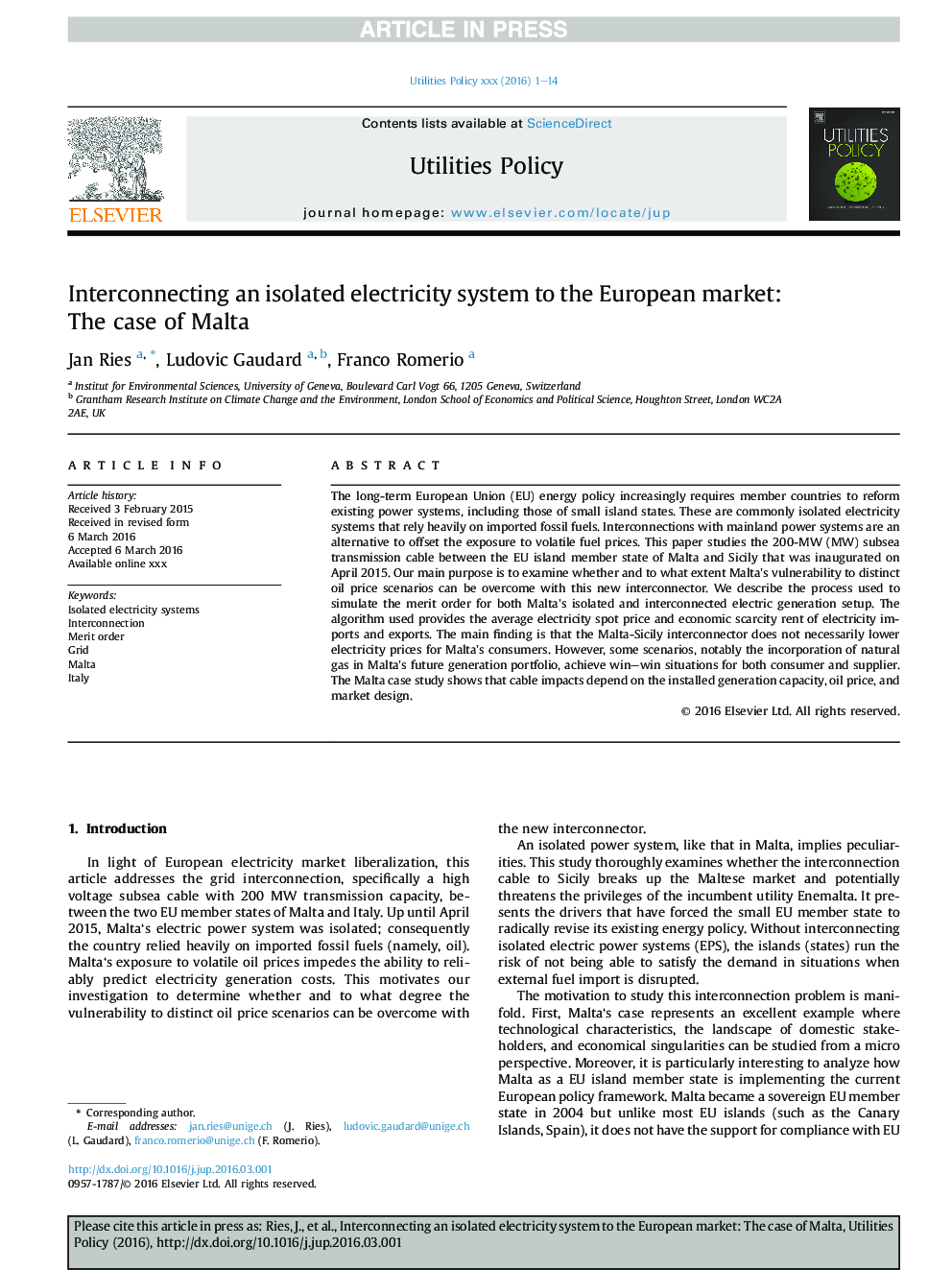| Article ID | Journal | Published Year | Pages | File Type |
|---|---|---|---|---|
| 7411417 | Utilities Policy | 2016 | 14 Pages |
Abstract
The long-term European Union (EU) energy policy increasingly requires member countries to reform existing power systems, including those of small island states. These are commonly isolated electricity systems that rely heavily on imported fossil fuels. Interconnections with mainland power systems are an alternative to offset the exposure to volatile fuel prices. This paper studies the 200-MW (MW) subsea transmission cable between the EU island member state of Malta and Sicily that was inaugurated on April 2015. Our main purpose is to examine whether and to what extent Malta's vulnerability to distinct oil price scenarios can be overcome with this new interconnector. We describe the process used to simulate the merit order for both Malta's isolated and interconnected electric generation setup. The algorithm used provides the average electricity spot price and economic scarcity rent of electricity imports and exports. The main finding is that the Malta-Sicily interconnector does not necessarily lower electricity prices for Malta's consumers. However, some scenarios, notably the incorporation of natural gas in Malta's future generation portfolio, achieve win-win situations for both consumer and supplier. The Malta case study shows that cable impacts depend on the installed generation capacity, oil price, and market design.
Related Topics
Physical Sciences and Engineering
Energy
Energy (General)
Authors
Jan Ries, Ludovic Gaudard, Franco Romerio,
